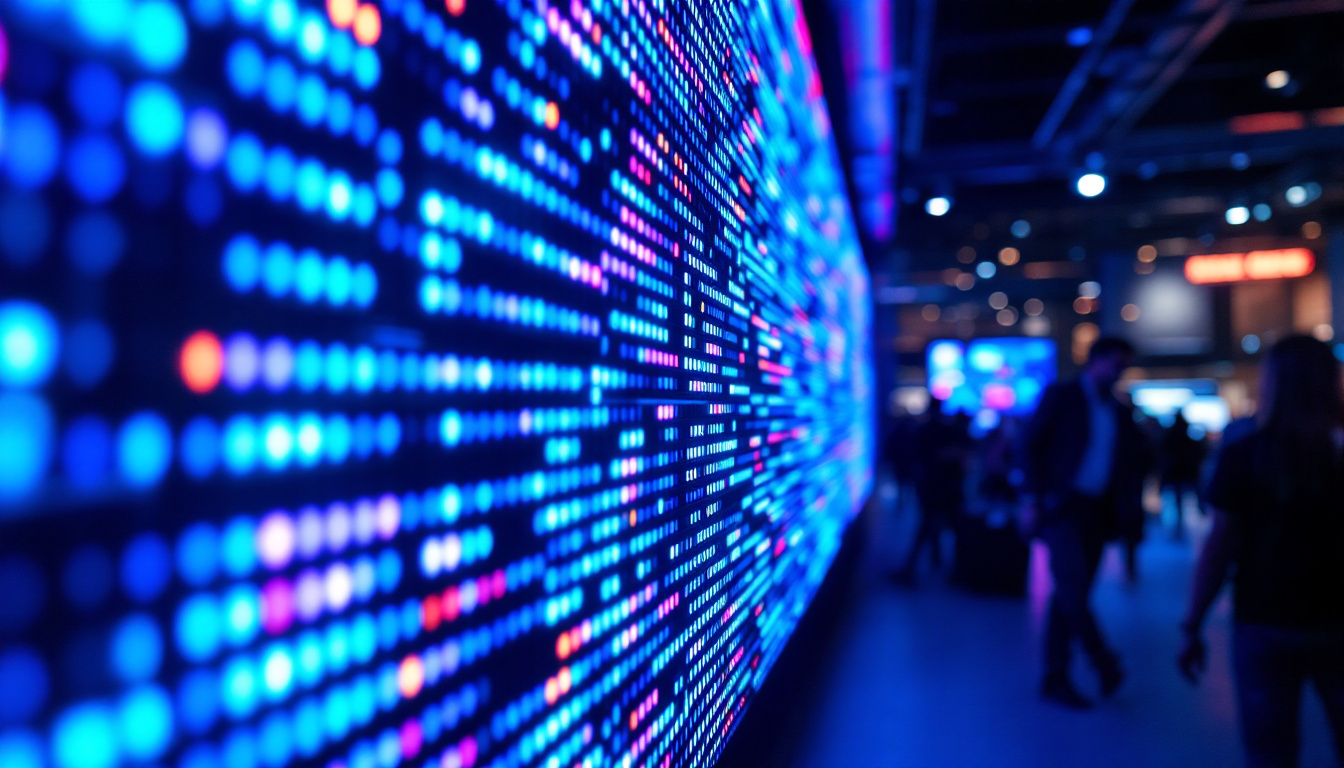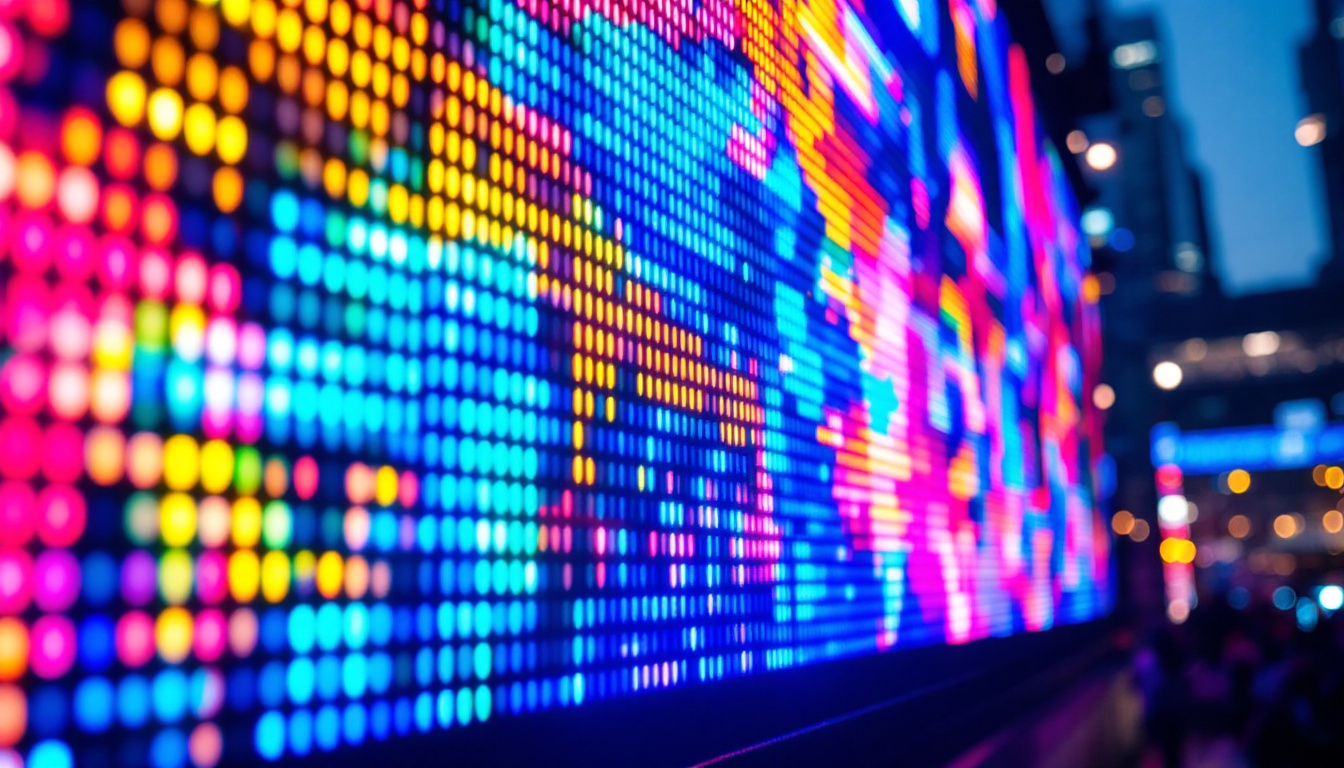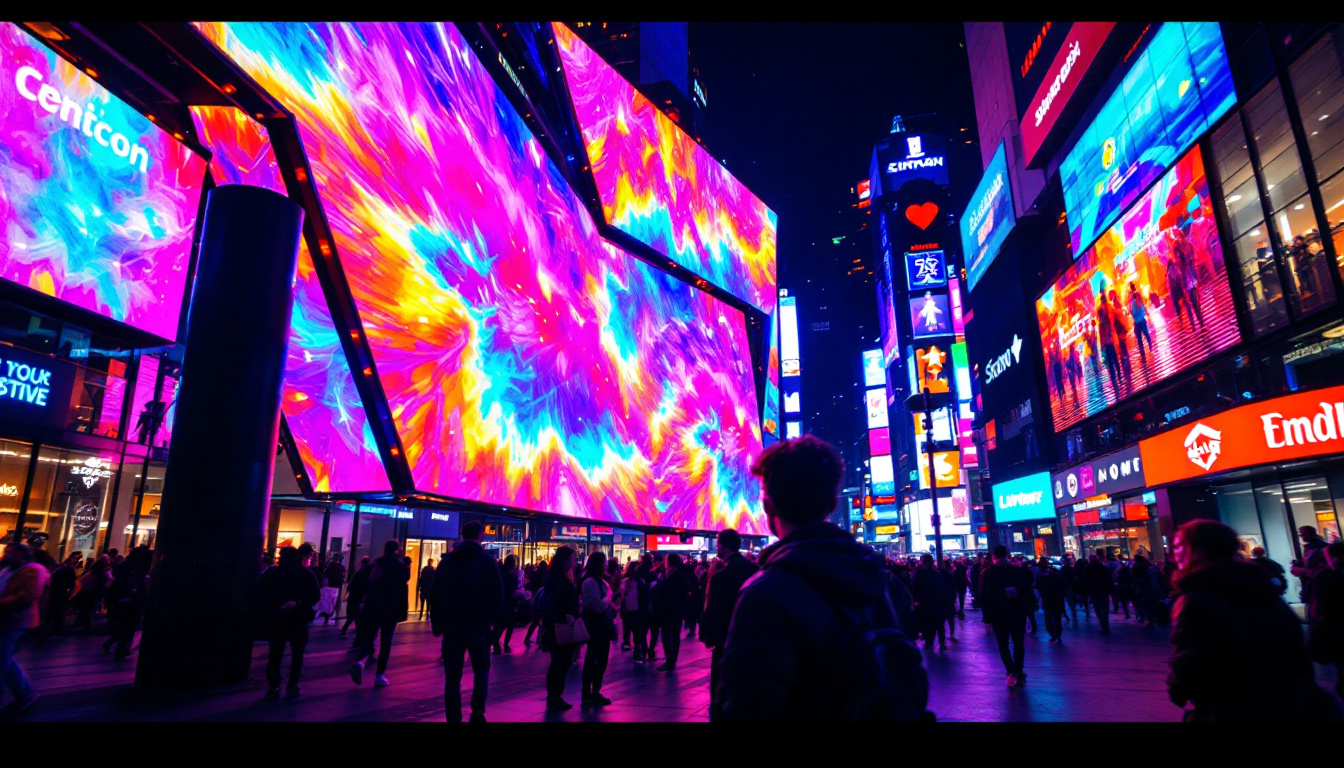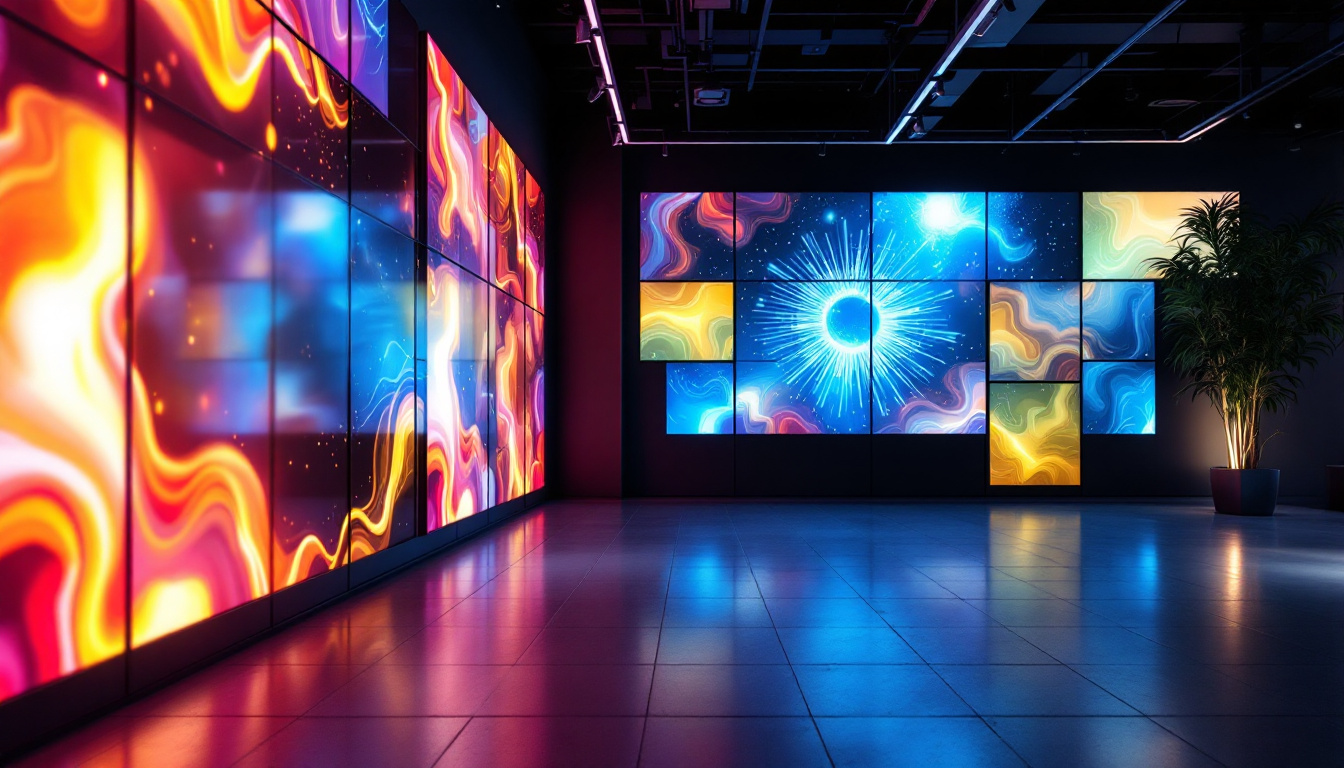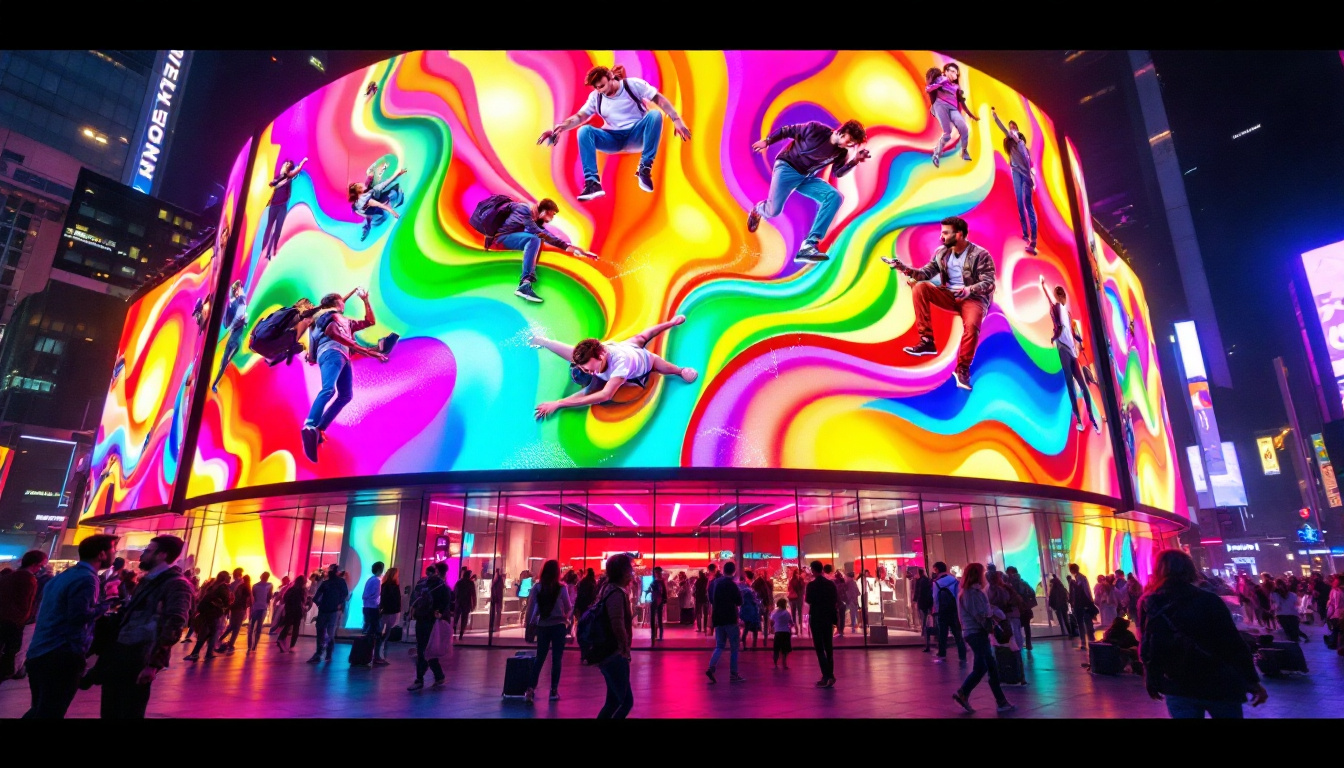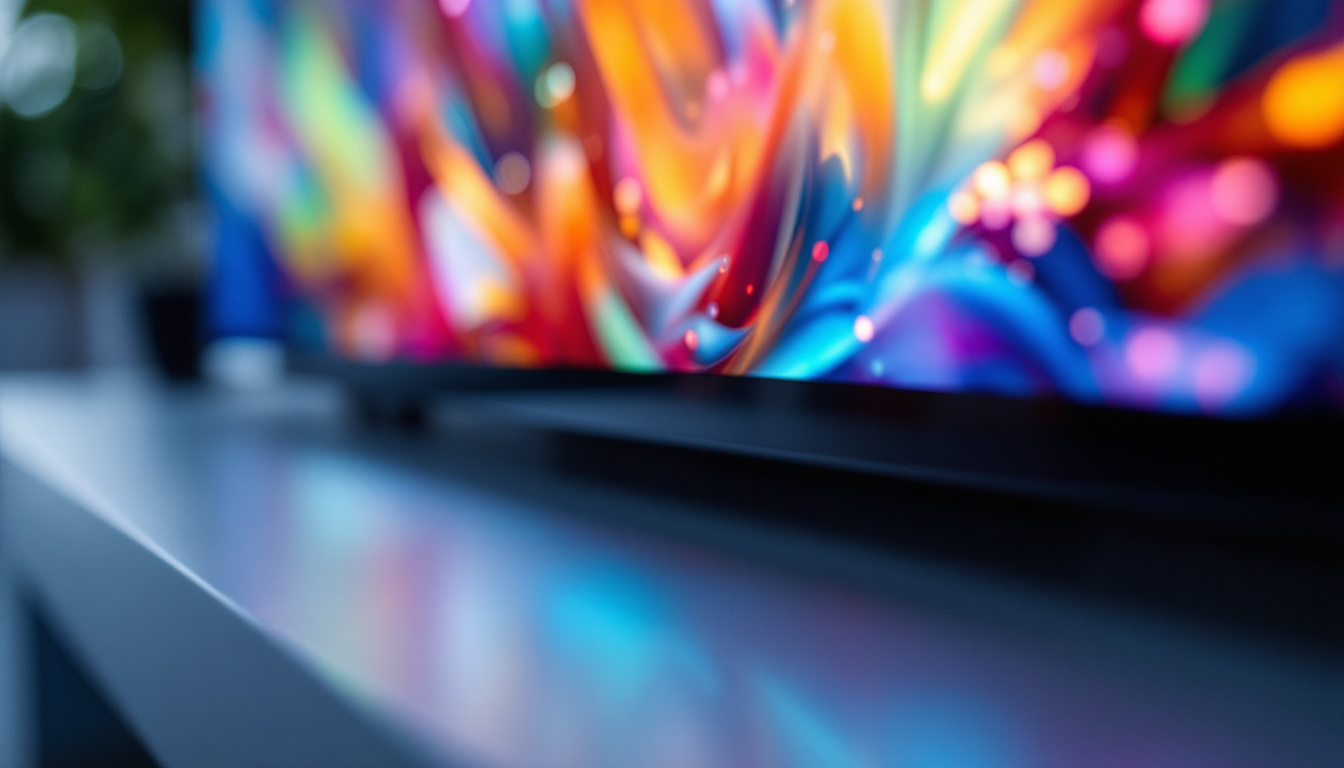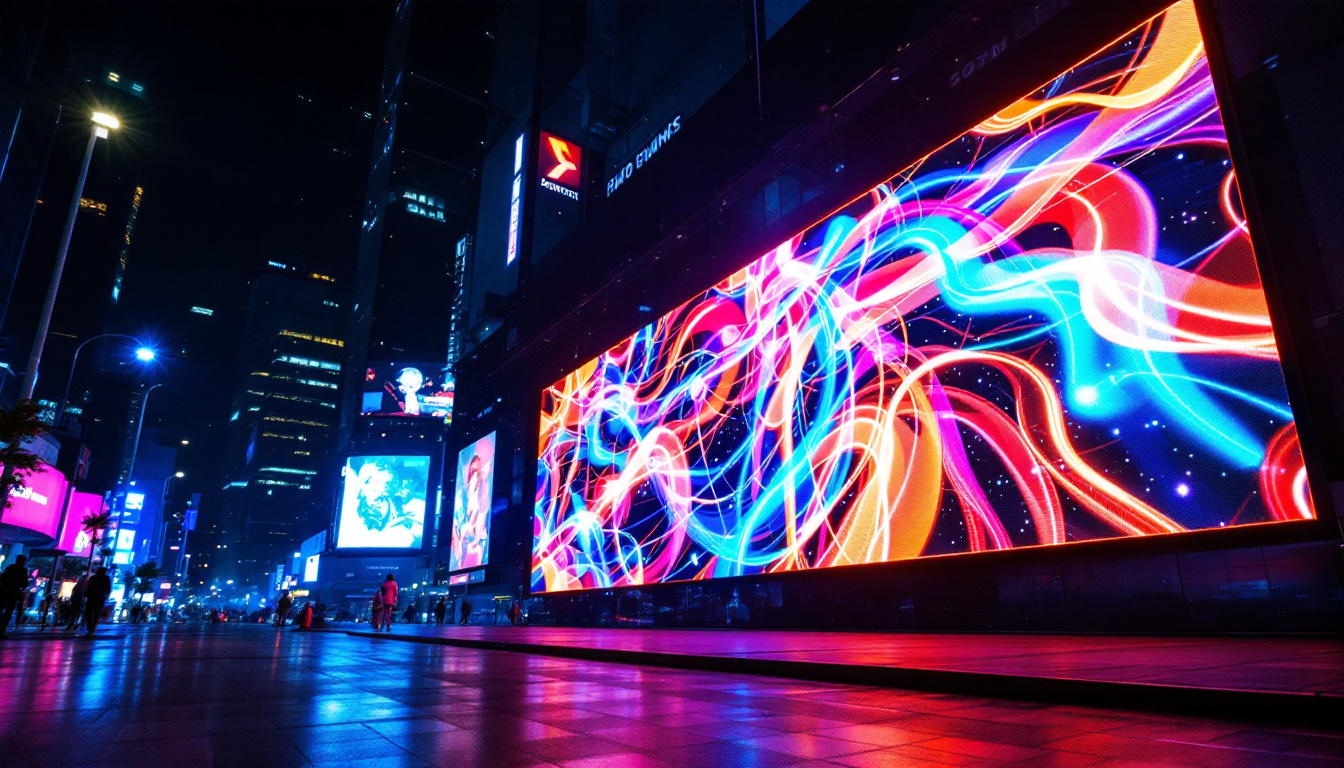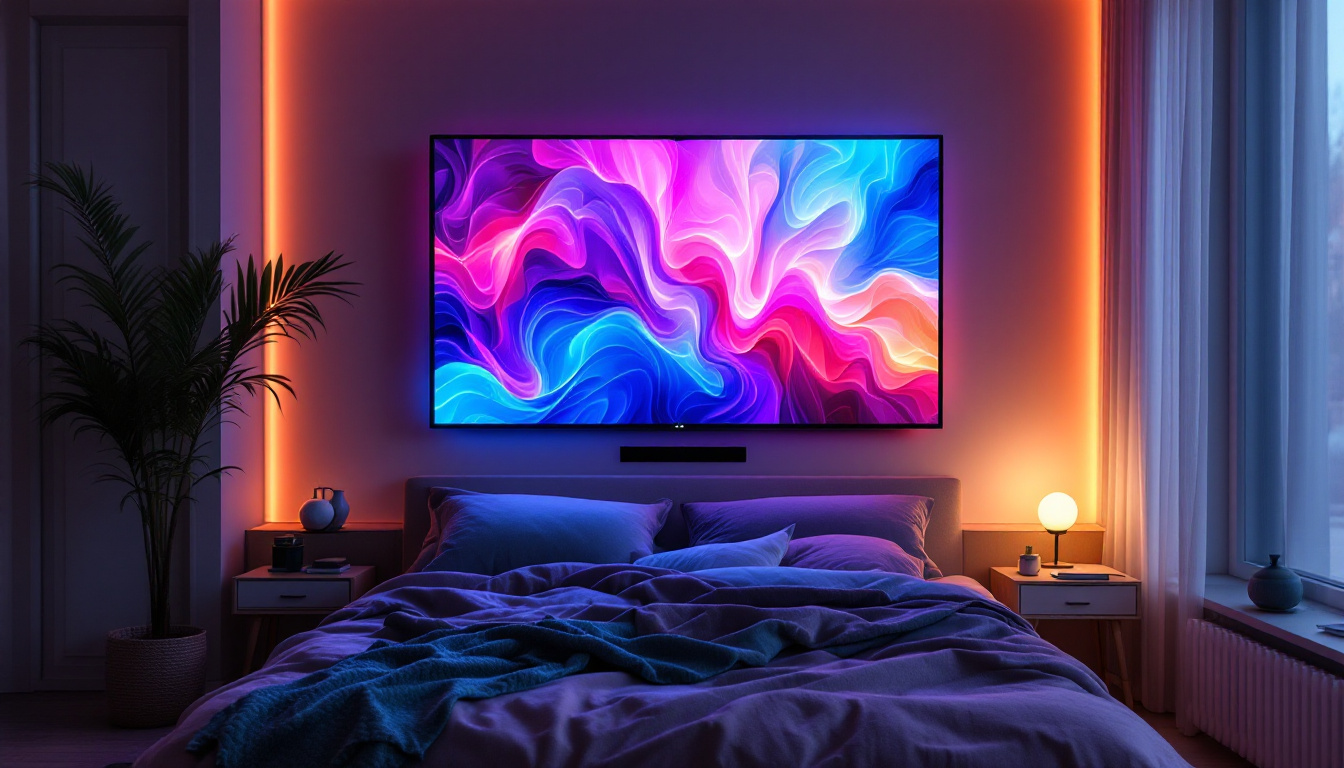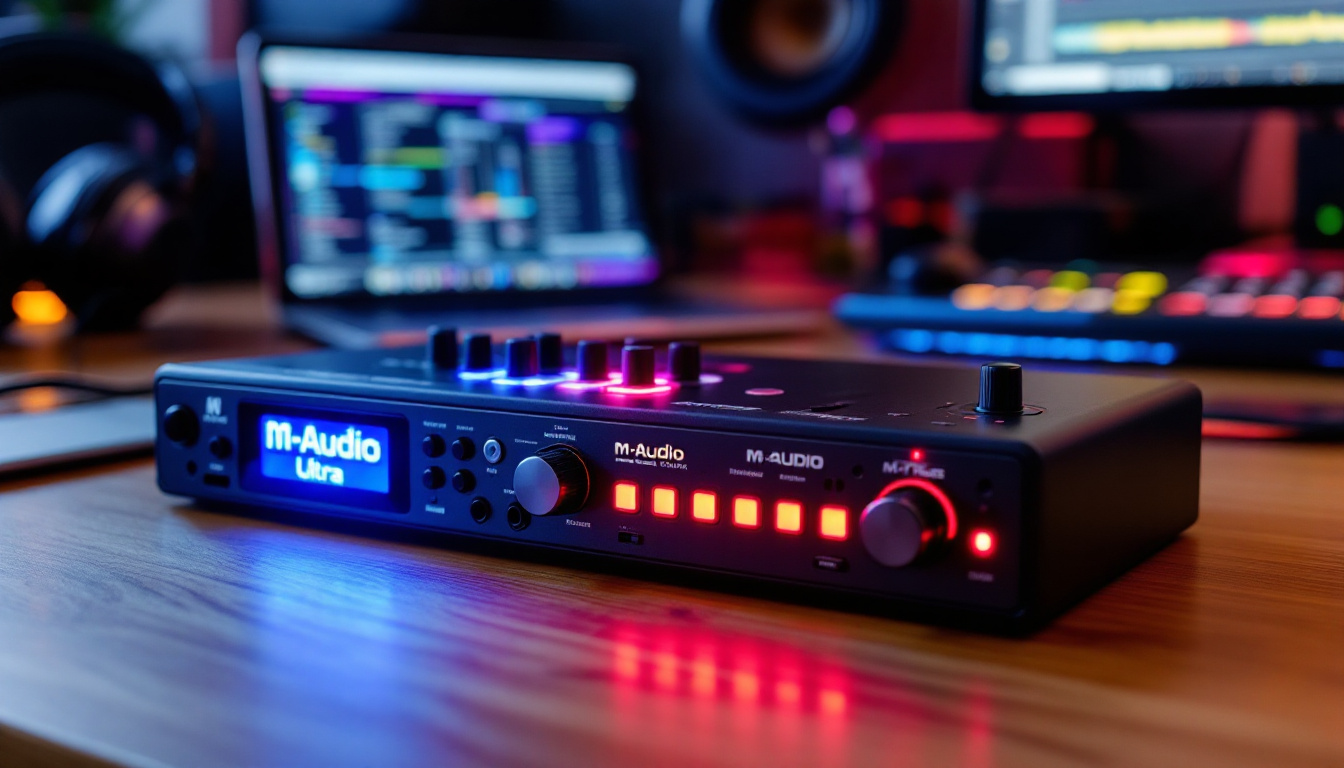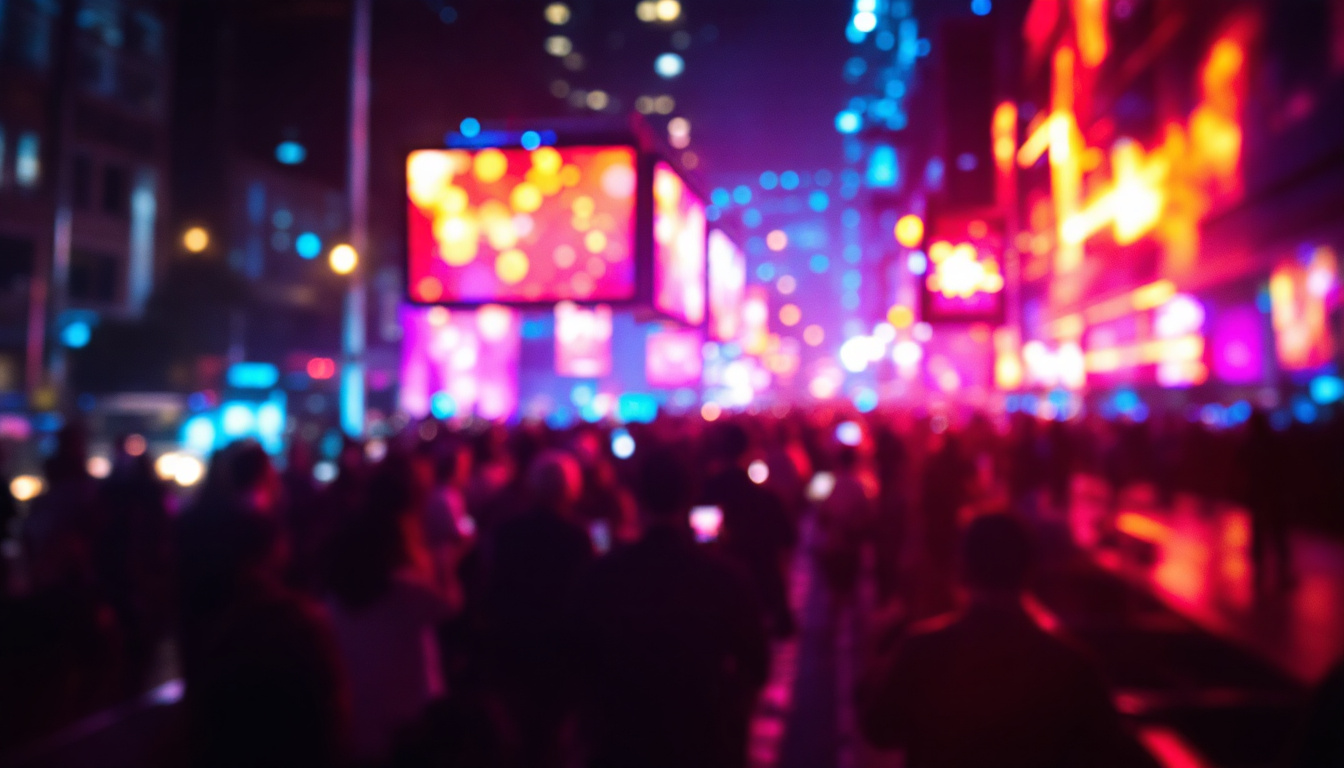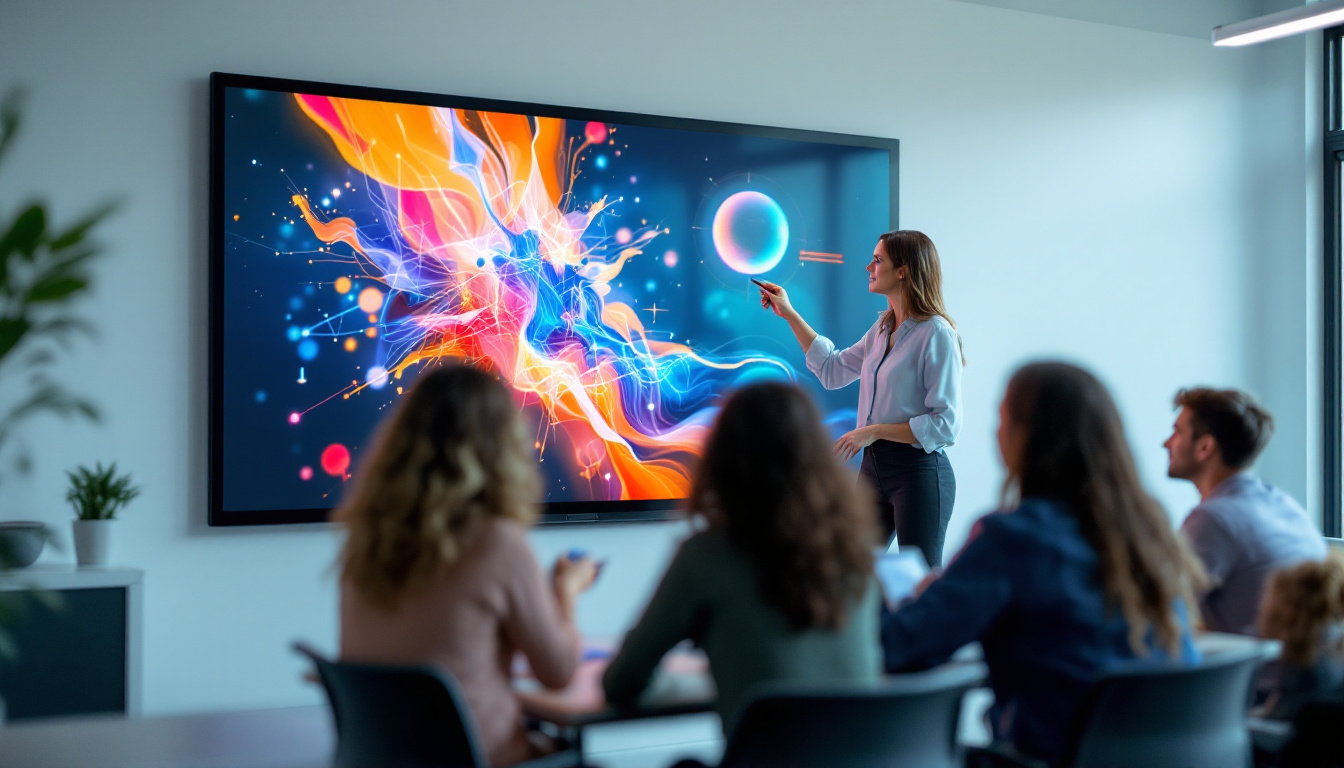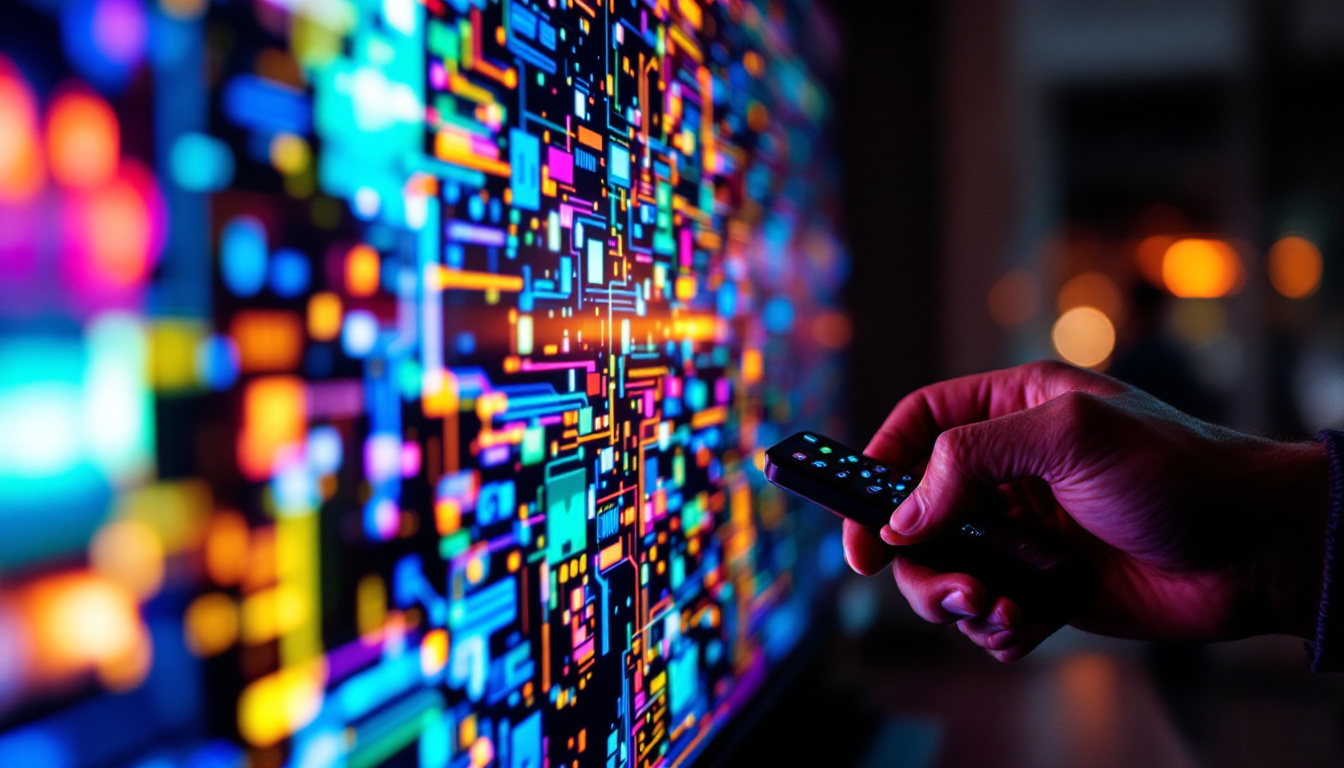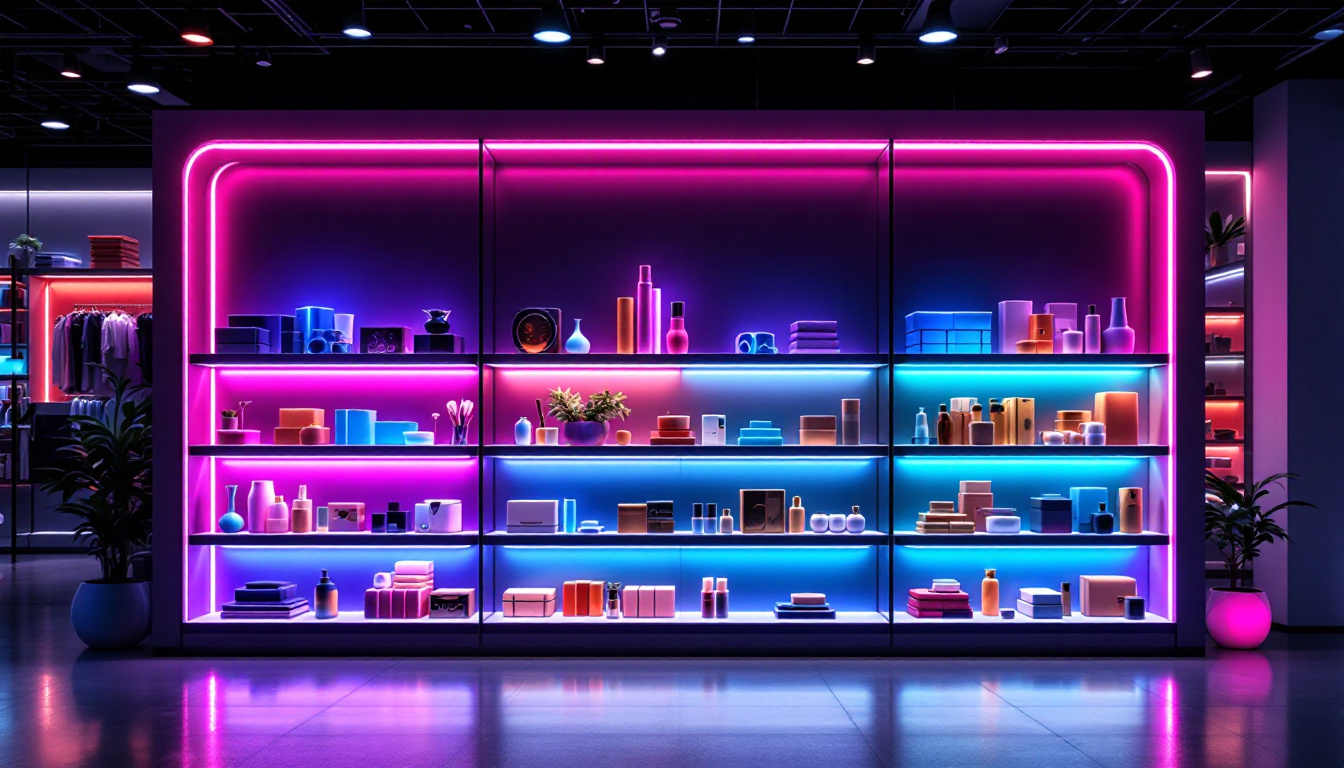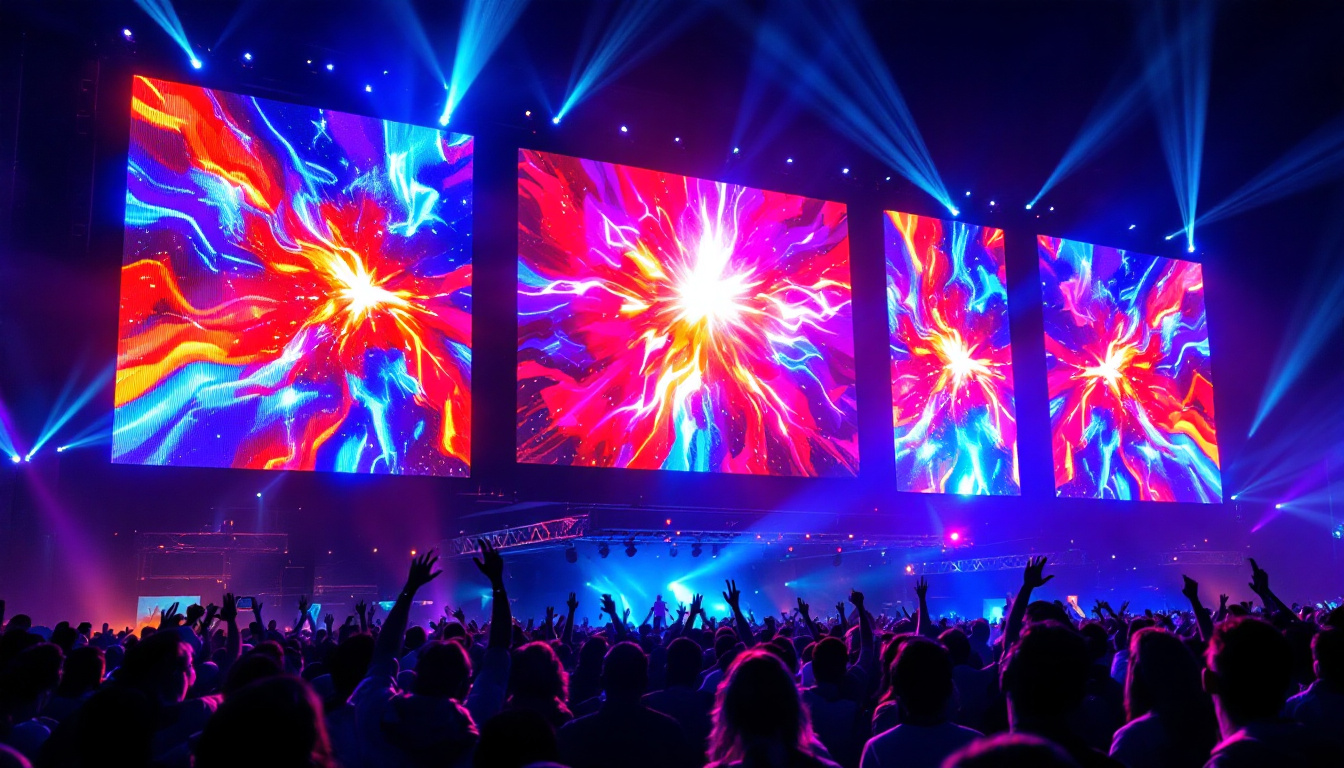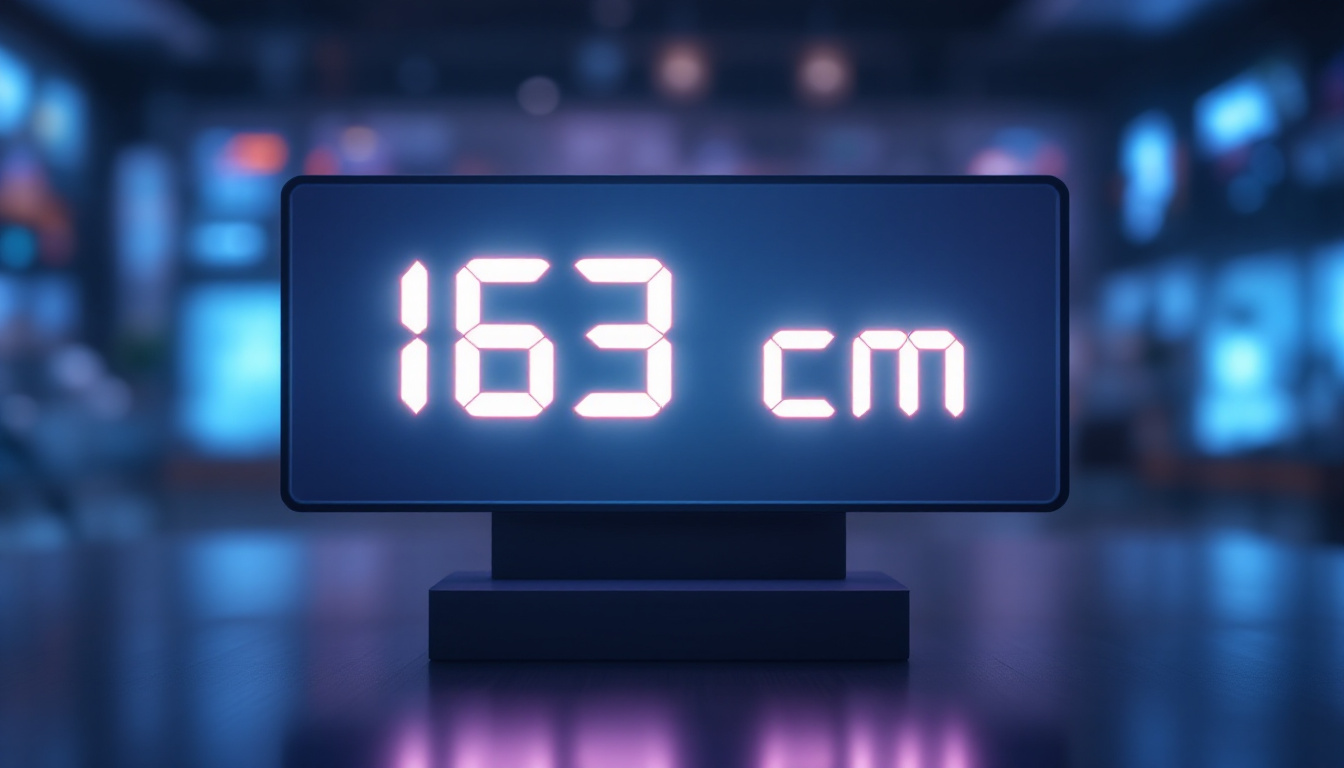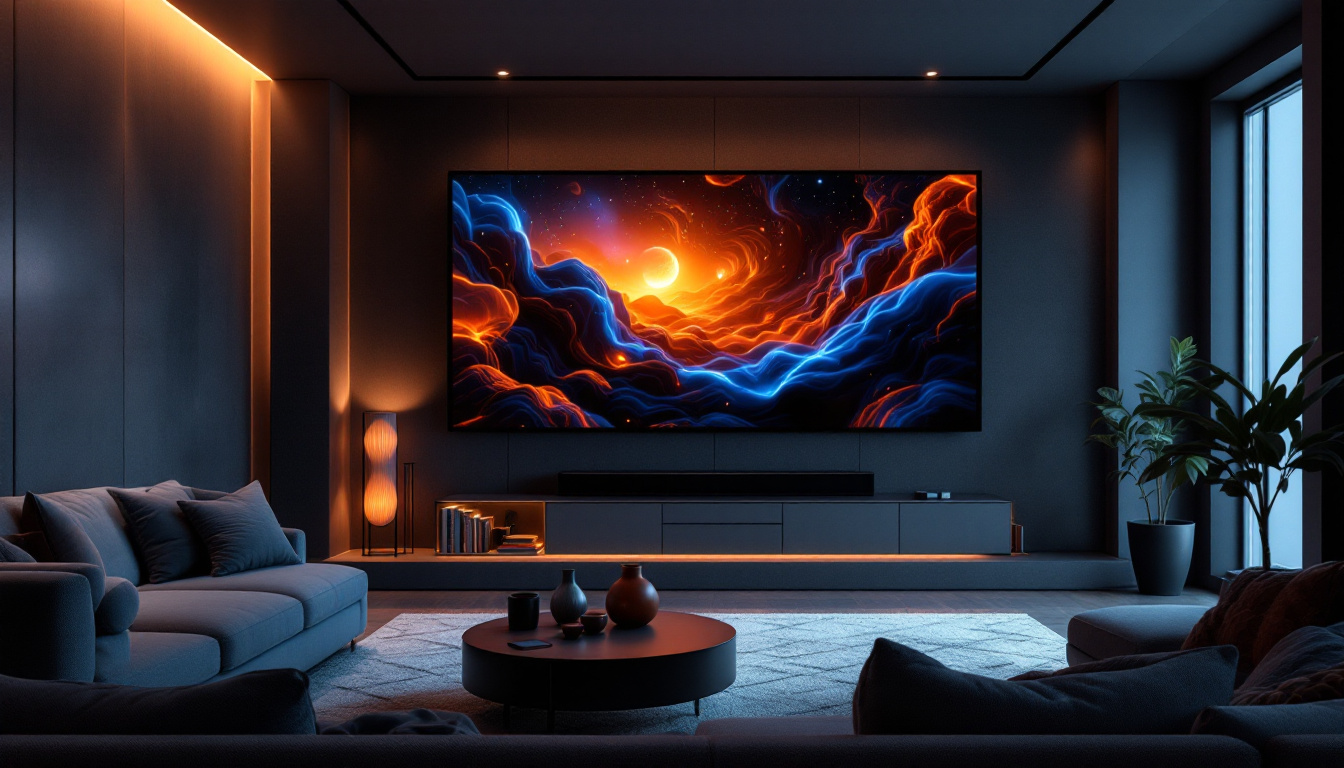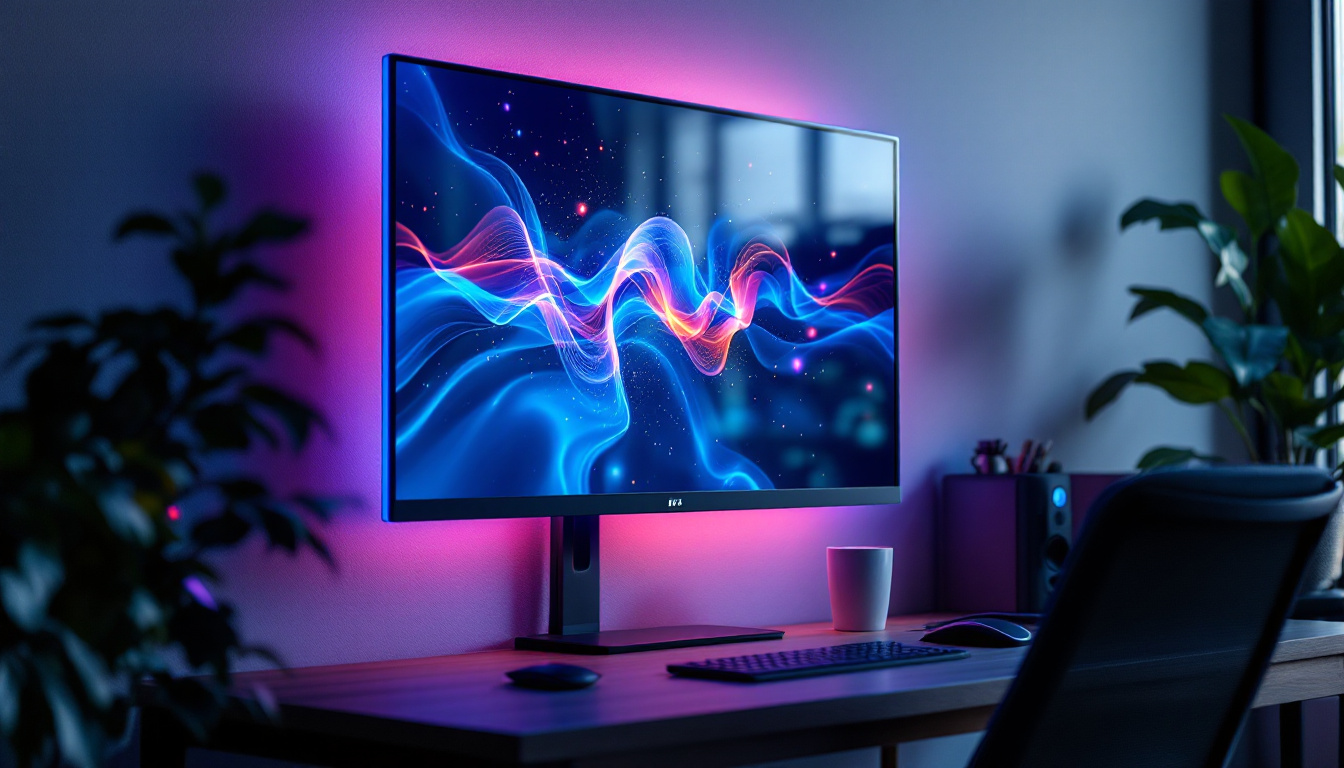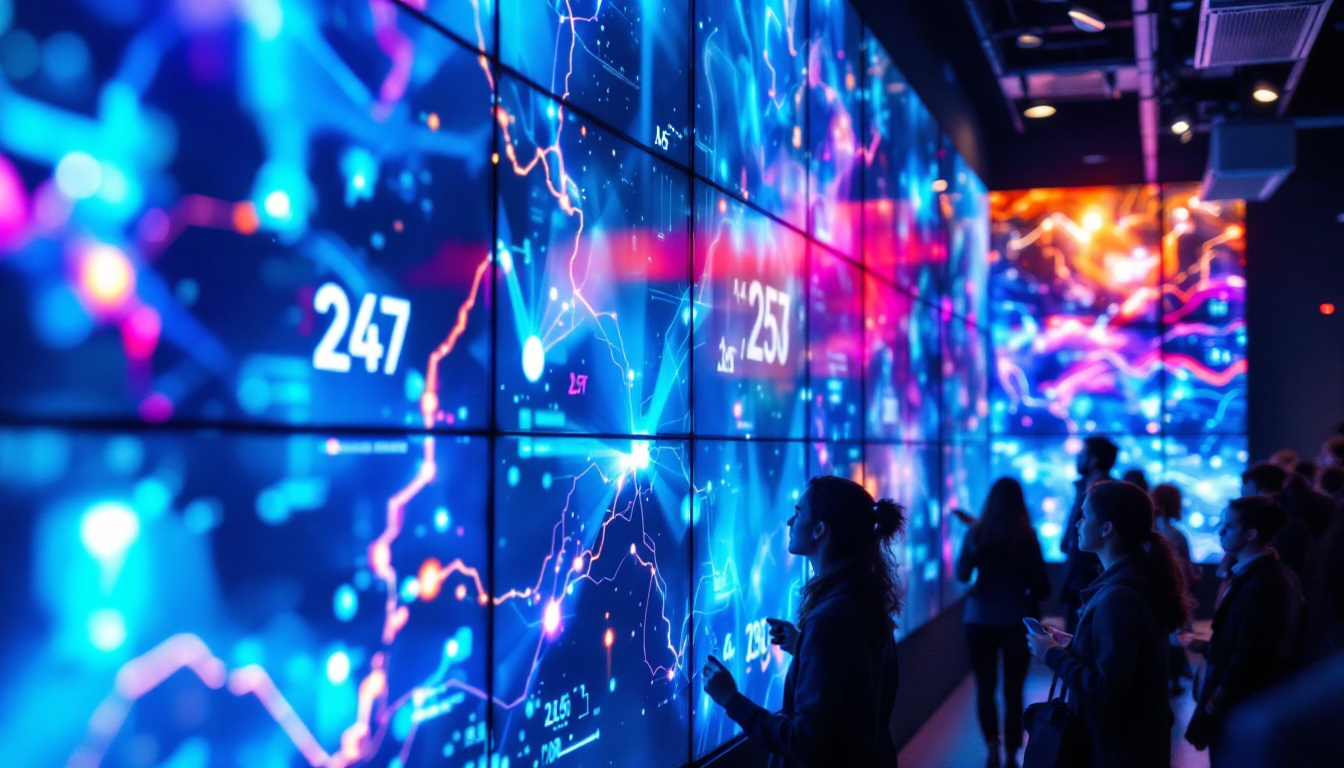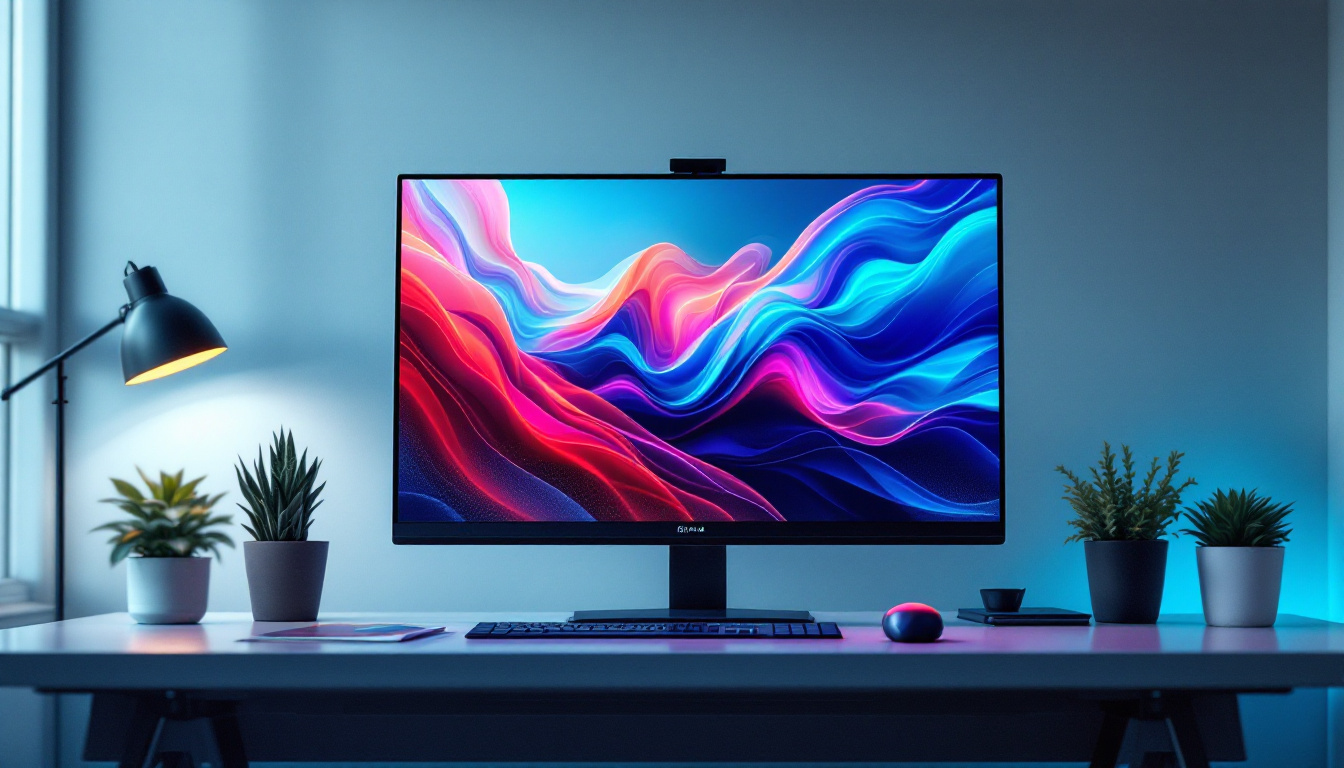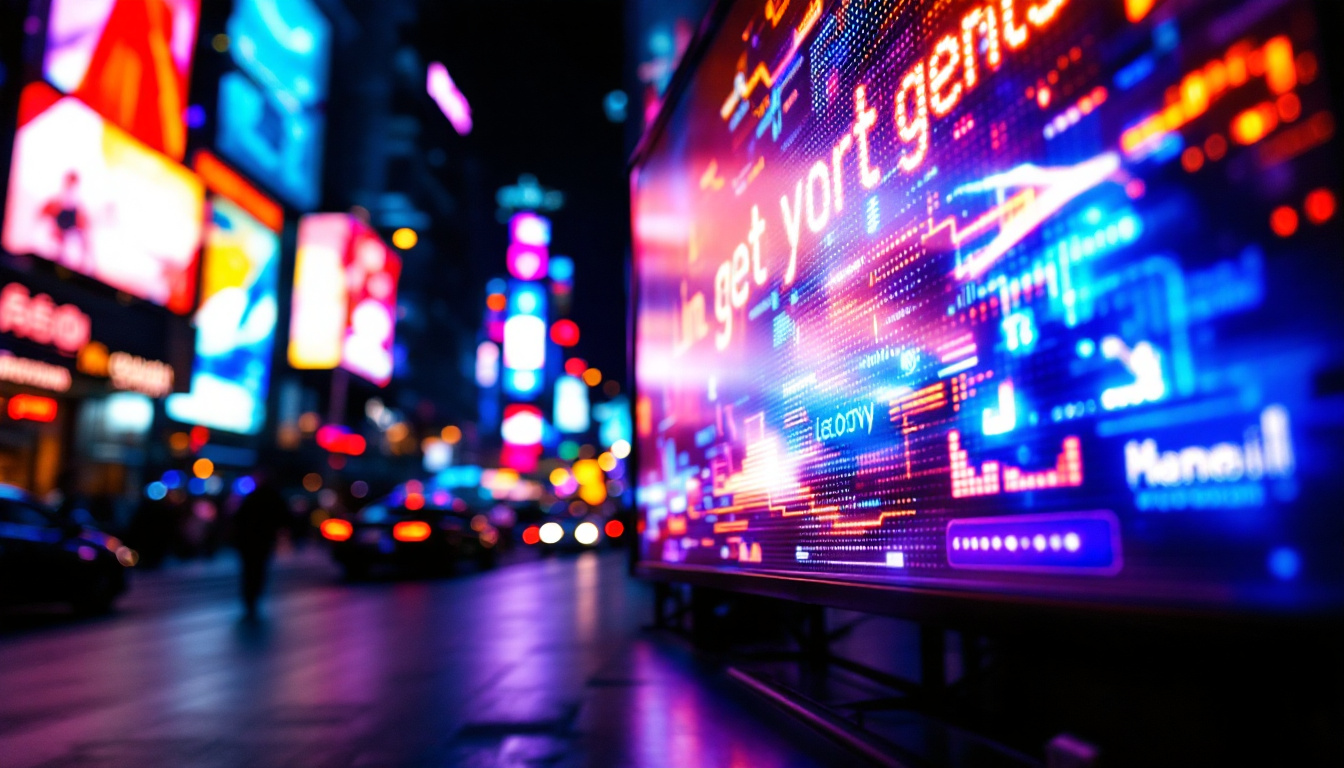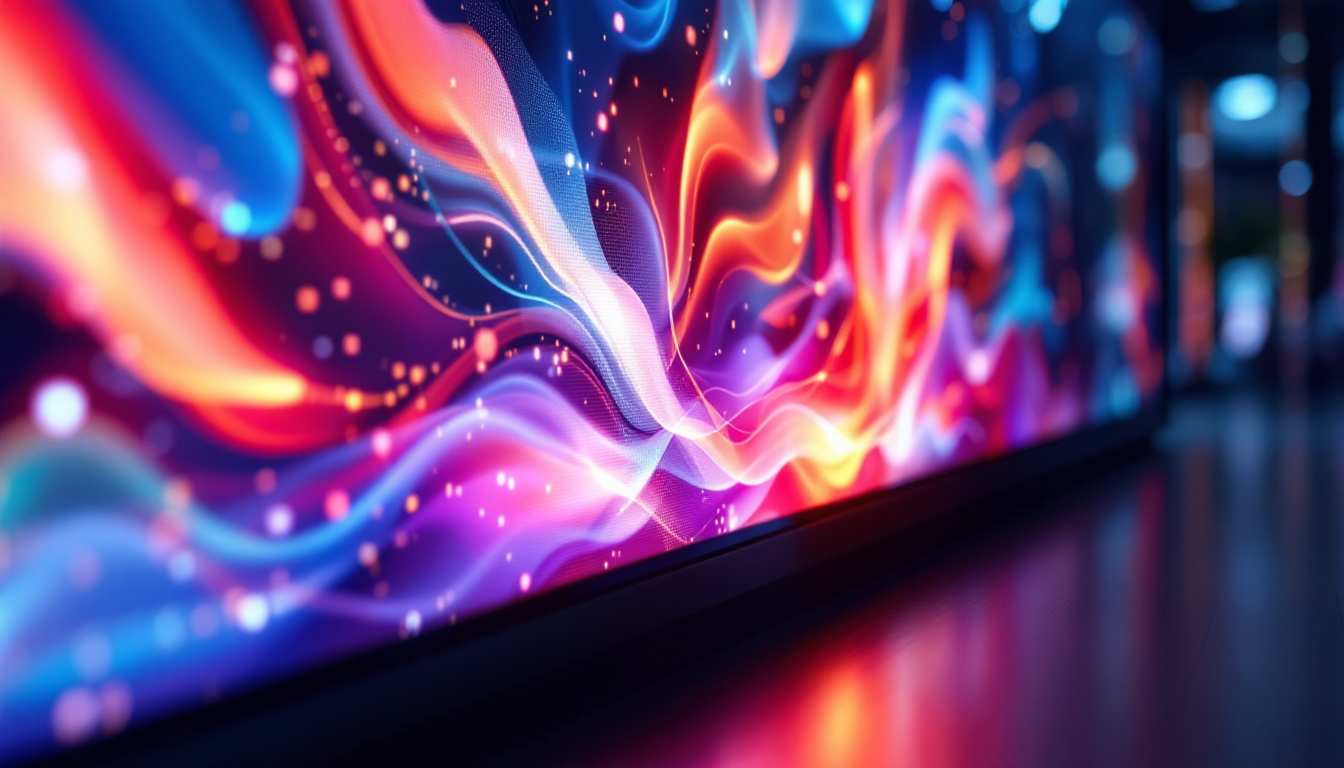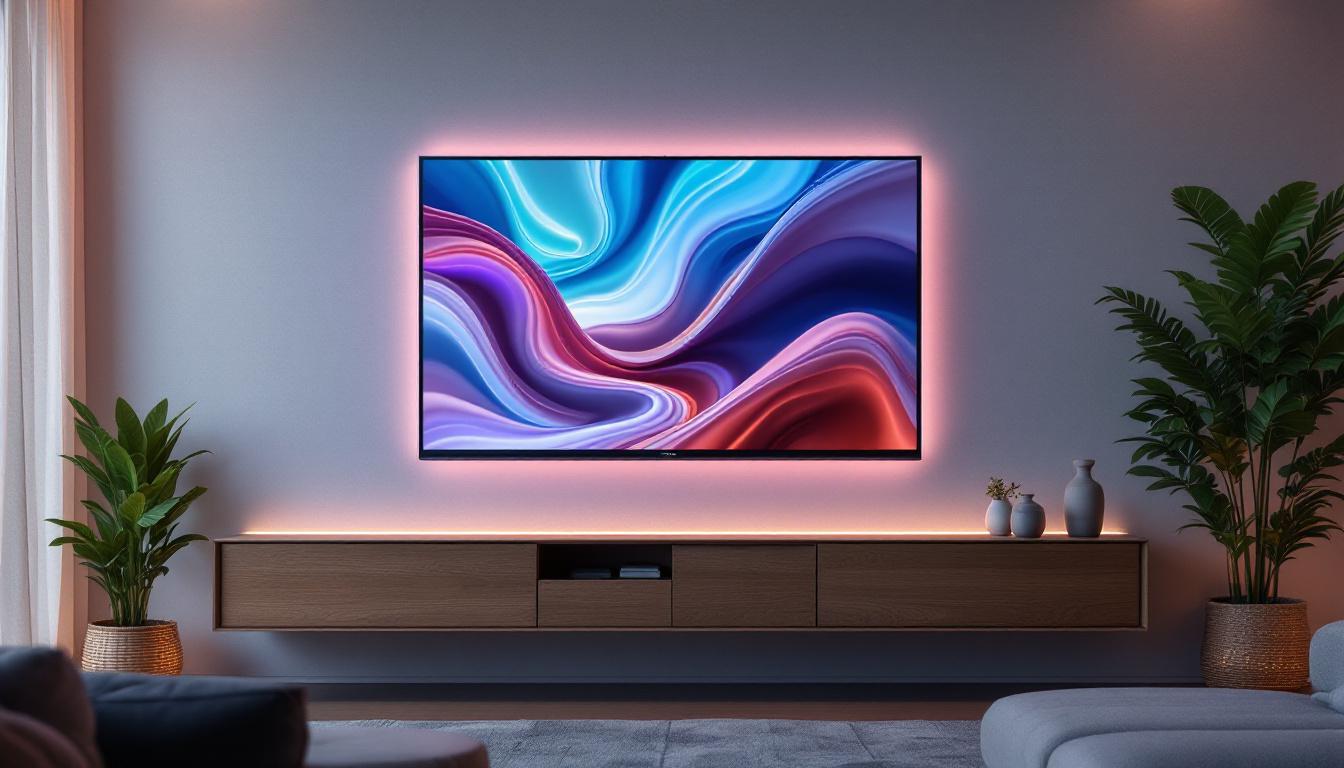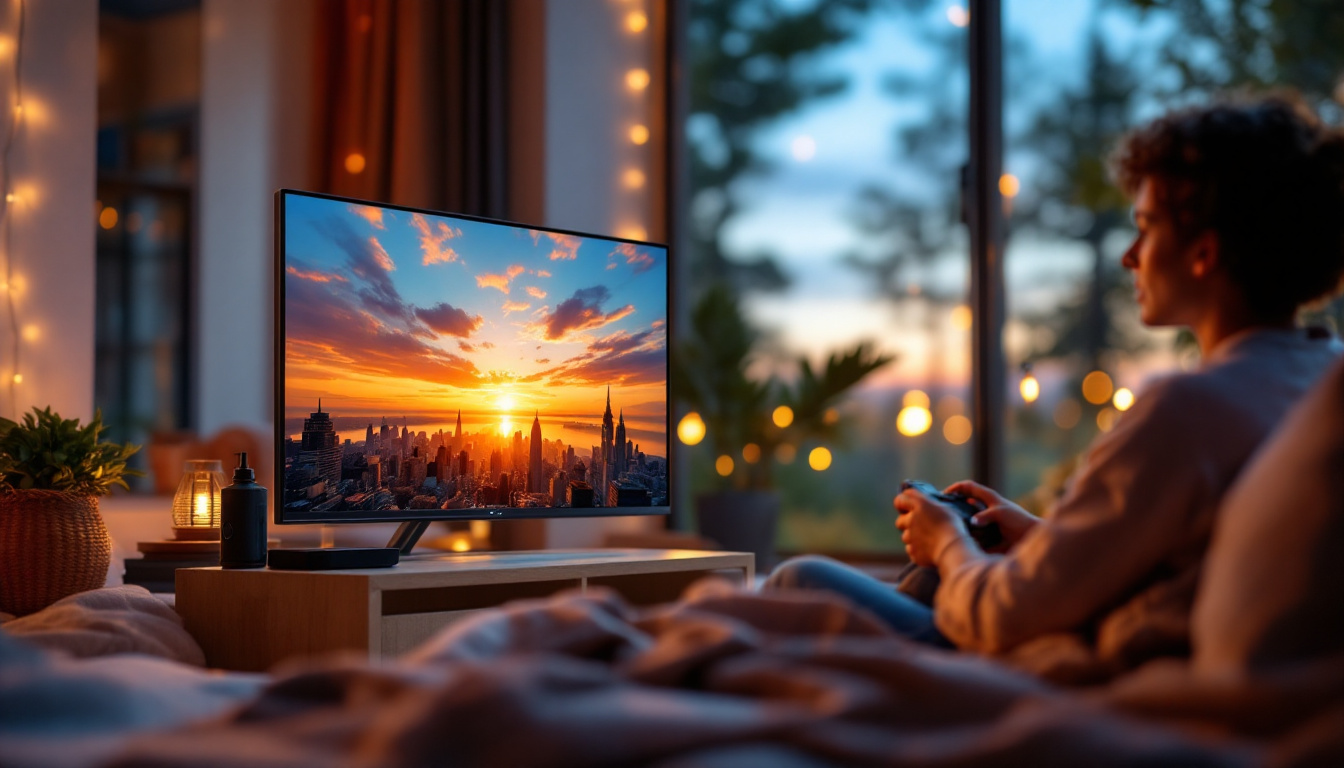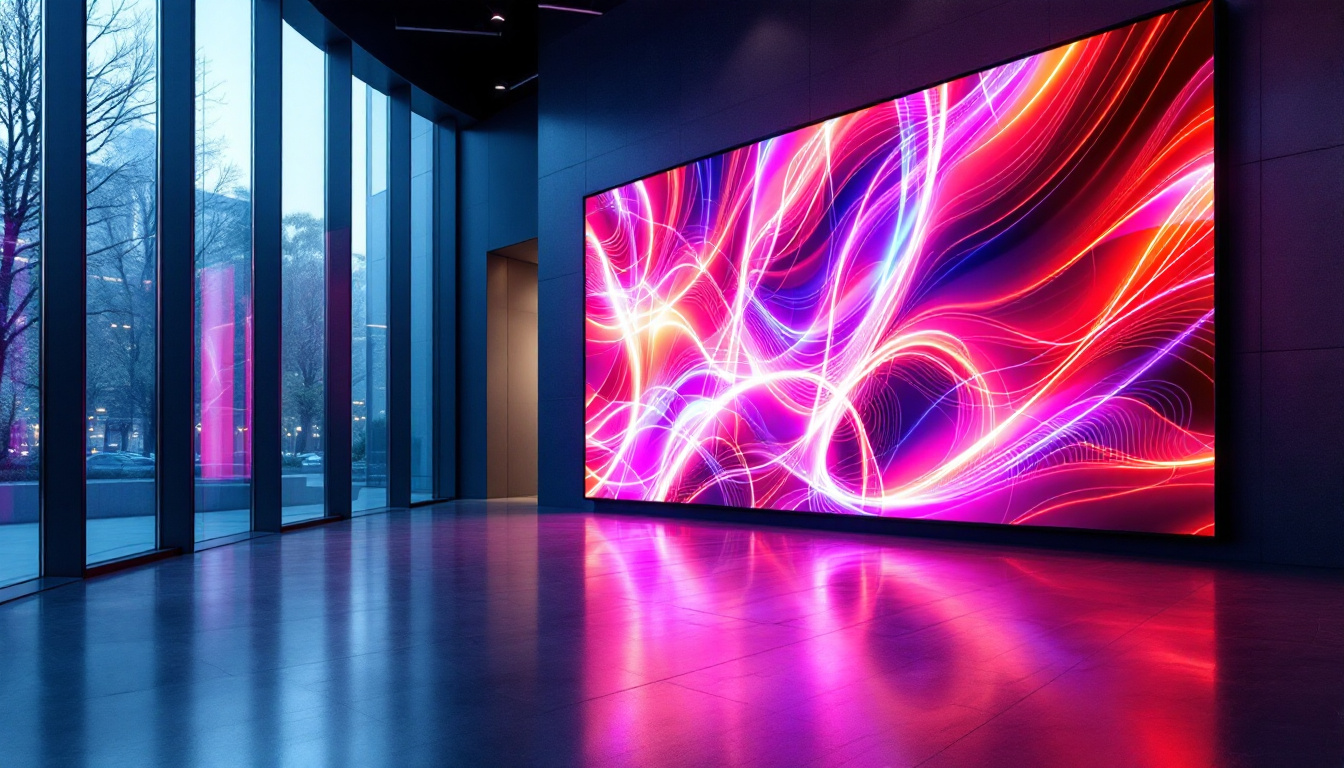Programmable Flexible LED Display: LED Display Explained
The evolution of display technology has led to the emergence of programmable flexible LED displays, which have transformed the way information is presented across various platforms. These displays offer versatility, high-quality visuals, and the ability to create captivating experiences for viewers. This article delves into the intricacies of programmable flexible LED displays, exploring their features, applications, and the technology that drives them.
Understanding LED Technology
Light Emitting Diodes (LEDs) have been a cornerstone of modern display technology. Their ability to emit light when an electric current passes through them makes them ideal for various applications, from simple indicators to complex displays. Over the years, LEDs have evolved significantly, leading to advancements in both their efficiency and versatility. Today, they are not only found in screens and lighting but also play a crucial role in automotive lighting, medical devices, and even horticulture, showcasing their adaptability across different fields.
How LEDs Work
At the core of LED technology is the semiconductor material that emits light when energized. The color of the emitted light depends on the materials used in the semiconductor. For example, gallium nitride produces blue light, while gallium phosphide is used for green light. By combining different colors, a full spectrum of light can be achieved, allowing for vibrant and dynamic displays. The process of electroluminescence, where the semiconductor emits photons when electrons recombine with holes, is fundamental to this technology. This intricate dance of particles not only defines the color but also influences the efficiency and brightness of the LED, making ongoing research into new materials and structures essential for future innovations.
Advantages of LED Displays
LED displays offer numerous advantages over traditional display technologies. They are energy-efficient, have a longer lifespan, and provide brighter images with better contrast ratios. Additionally, they are lightweight and compact, making them suitable for a variety of applications, including indoor and outdoor settings. The durability of LEDs also means they are less prone to damage from shocks and vibrations, which is particularly beneficial in mobile and outdoor environments. Furthermore, advancements in LED technology have led to the development of flexible displays, allowing for innovative designs that can bend and curve, opening up new possibilities for creative applications in advertising and architecture.
What is a Programmable Flexible LED Display?
A programmable flexible LED display is a type of LED screen that can be shaped and configured to fit various surfaces and structures. Unlike traditional rigid displays, these flexible versions can bend, curve, and even wrap around objects, providing unique opportunities for creative installations. This adaptability makes them particularly popular in environments where space is at a premium or where unconventional display shapes can enhance the overall aesthetic.
Key Features
Programmable flexible LED displays come with several key features that set them apart from conventional displays. These include:
- Flexibility: The ability to bend and shape the display allows for innovative designs that can conform to different environments.
- Programmability: Users can easily change the content displayed, making it suitable for dynamic advertising and information dissemination.
- High Resolution: Many flexible LED displays offer high-resolution capabilities, ensuring that images and videos are sharp and vibrant.
Construction and Design
The construction of programmable flexible LED displays involves a combination of flexible circuit boards and high-quality LED modules. These components are designed to be lightweight and durable, allowing for easy installation and maintenance. The design often incorporates a modular approach, enabling users to create displays of various sizes and shapes by connecting multiple panels. This modularity not only enhances the versatility of the displays but also simplifies upgrades and repairs, as individual sections can be replaced without needing to overhaul the entire system.
Moreover, the technology behind these displays has evolved significantly, with advancements in materials and manufacturing processes leading to even thinner and more efficient screens. Many modern flexible LED displays utilize cutting-edge technologies such as organic light-emitting diodes (OLEDs) and micro-LEDs, which contribute to improved color accuracy and energy efficiency. This means that not only can they be used in more creative ways, but they can also be more environmentally friendly, consuming less power while delivering stunning visual experiences. As a result, these displays are increasingly being adopted in a variety of sectors, from retail and entertainment to art installations and architectural designs.
Applications of Programmable Flexible LED Displays
Programmable flexible LED displays are versatile and can be used in a wide range of applications. Their adaptability makes them suitable for various industries, including advertising, entertainment, and architecture.
Advertising and Marketing
In the advertising sector, programmable flexible LED displays have become a popular choice for brands looking to create eye-catching campaigns. These displays can be installed in unconventional locations, such as building facades, storefronts, and even vehicles, allowing brands to reach audiences in innovative ways. The flexibility of these displays means they can be tailored to fit unique shapes and sizes, enabling creative designs that capture attention. Additionally, the ability to program content in real-time allows advertisers to respond to trends or events, ensuring their messaging remains relevant and engaging.
Events and Entertainment
Flexible LED displays are frequently used in concerts, festivals, and other live events. Their ability to create immersive environments through dynamic visuals enhances the audience’s experience. From stage backdrops to interactive installations, these displays can transform any event into a memorable occasion. Beyond just visuals, they can also integrate sound and lighting systems, creating a synchronized experience that captivates attendees. Furthermore, with advancements in technology, these displays can now be used for augmented reality experiences, allowing audiences to interact with the performance in ways that were previously unimaginable.
Architectural Integration
In architecture, programmable flexible LED displays are being integrated into building designs, allowing for creative lighting solutions and dynamic facades. These displays can be programmed to change colors, patterns, and images, contributing to the overall aesthetic of a structure while providing functional benefits, such as wayfinding or information display. Moreover, architects are increasingly utilizing these displays to promote sustainability; by incorporating energy-efficient LED technology, buildings can reduce their carbon footprint while still making a bold visual statement. This integration not only enhances the architectural beauty but also allows for the creation of smart buildings that can adapt their appearance based on environmental conditions or specific events, further blurring the lines between technology and design.
Technology Behind Programmable Flexible LED Displays
The technology that powers programmable flexible LED displays is continuously evolving. Understanding the underlying components and systems is essential for appreciating their capabilities.
Control Systems
At the heart of any programmable display is its control system. These systems allow users to manage the content displayed on the screen, enabling real-time updates and customization. Advanced control systems can synchronize multiple displays, creating a cohesive visual experience across large installations.
Software Solutions
Software plays a crucial role in the functionality of programmable flexible LED displays. Various software solutions are available that enable users to design, schedule, and manage content. These tools often come with user-friendly interfaces, making it easy for non-technical users to create stunning displays without extensive training.
Benefits of Using Programmable Flexible LED Displays
Choosing programmable flexible LED displays offers numerous benefits that can enhance communication and engagement across various platforms.
Enhanced Engagement
With their dynamic and visually appealing nature, flexible LED displays are proven to capture attention more effectively than static displays. This heightened engagement can lead to increased brand awareness and customer interaction, making them an invaluable tool for marketers.
Cost-Effectiveness
While the initial investment in flexible LED technology may be higher than traditional displays, the long-term savings on maintenance, energy consumption, and content updates can make them more cost-effective over time. Their durability and longevity also contribute to lower replacement costs.
Challenges and Considerations
Despite their many advantages, programmable flexible LED displays come with certain challenges that need to be addressed to maximize their potential.
Installation and Maintenance
The installation of flexible LED displays can be more complex than traditional displays due to their unique shapes and configurations. Proper training and expertise are essential to ensure that installations are carried out correctly. Additionally, maintenance can require specialized knowledge, particularly when dealing with intricate designs.
Environmental Factors
Flexible LED displays, especially those used outdoors, must be designed to withstand various environmental conditions, including moisture, temperature fluctuations, and UV exposure. Selecting the right materials and protective coatings is crucial to ensure longevity and performance.
The Future of Programmable Flexible LED Displays
The future of programmable flexible LED displays looks promising, with advancements in technology paving the way for even more innovative applications. As the demand for dynamic and engaging visual communication continues to grow, these displays are expected to play a significant role in shaping the landscape of advertising, entertainment, and architecture.
Integration with Smart Technologies
As smart technologies become more prevalent, the integration of programmable flexible LED displays with IoT (Internet of Things) systems is likely to increase. This integration will enable displays to interact with other devices and systems, creating more personalized and context-aware experiences for users.
Advancements in Display Quality
Ongoing research and development in LED technology are expected to yield displays with even higher resolutions, better color accuracy, and improved energy efficiency. These advancements will enhance the visual quality of flexible LED displays, making them even more appealing for a wider range of applications.
Conclusion
Programmable flexible LED displays represent a significant leap forward in display technology, offering unparalleled versatility and dynamic visual capabilities. Their applications span numerous industries, providing innovative solutions for advertising, entertainment, and architectural design. As technology continues to evolve, these displays will undoubtedly become an integral part of the visual landscape, transforming how information is communicated and experienced.
Investing in programmable flexible LED displays not only enhances engagement but also offers a cost-effective solution for modern communication needs. By understanding the technology and its applications, businesses and organizations can leverage these displays to create impactful experiences that resonate with their audiences.
Discover LumenMatrix’s Innovative LED Solutions
Ready to elevate your visual communication and create experiences that truly stand out? Look no further than LumenMatrix, a pioneer in LED display technology. From vibrant Indoor and Outdoor LED Wall Displays to dynamic Vehicle and Sports LED Displays, LumenMatrix offers a comprehensive range of solutions tailored to your needs. Embrace the future of advertising, entertainment, and architectural design with our Custom, All-in-One, and Transparent LED Displays. Experience the revolution in digital signage and let your brand shine like never before. Check out LumenMatrix LED Display Solutions today and transform your message into an unforgettable visual journey.

